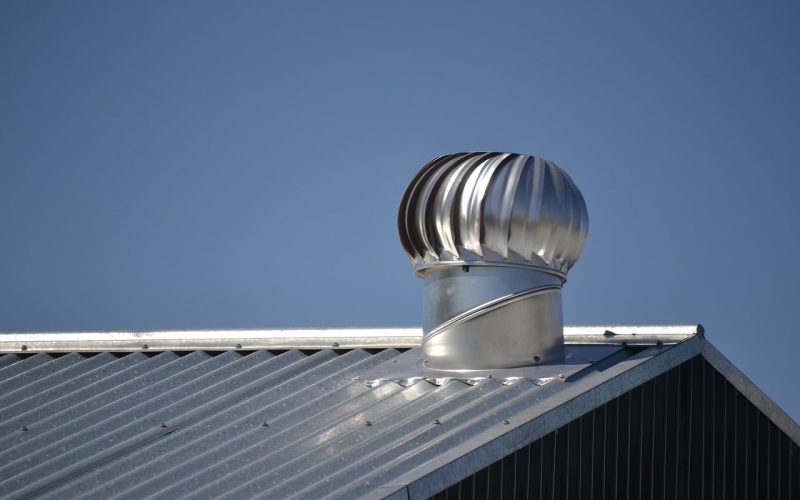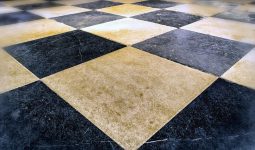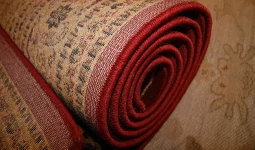If your current roof is giving you headaches (and maybe even a long list of expensive home repairs), it’s probably time to install or consider the pros and cons of metal roofing before you patch and fix it.
Or is it the hassle of the roof for your new home that is bothering you?
Whichever style of roof you choose, metal roofs can be an attractive option due to their longevity, minimal maintenance, and energy efficiency that will suit your home perfectly.
Material options include steel ( galvalume, galvanized, or weathering), aluminum, tin, copper, and zinc.
The product types are pre-formed panels, vertical seams, and granulated coated panels. Style options allow you to look similar to slate, tile, shingles, shakes, or vertical panels.
Did you know that Rain on a Tin Roof can be so relaxing that it can be incorporated into white noise machines and meditation apps?
But neither is it the only reason (or one of the top reasons!) for its popularity with homeowners today (the pros and cons of metal roofs will justify that).
Many people still install metal roofs in new construction and roof replacement projects.
McGraw-Hill Construction and Analytics estimate that 750,000 US homeowners chose metal roofing for their residences in 2015.
This number represents an 11% share of the roofing market, second only to asphalt shingles.
Surprisingly, one of the people’s biggest fears about metal roofs is unfounded: Metal roofs don’t attract lightning.
Metal Roofs Vs. Lighting
The fear of lightning striking is an imaginary problem. This misconception that metal roofs attract lightning is likely due to the fact that metal itself is known to be a good conductor of electricity, and therefore, people decided to assume that a metal roof should attract lightning.
In reality, when lightning strikes, it seeks a path to the ground and will almost always strike any object higher up in the area with a direct path to the ground.
Your metal roof isn’t grounded, so lightning doesn’t have to hit it. A metal roof does not make your home more vulnerable to lightning strikes.
In addition, metal roofs have other pros and cons that are worth considering when making your decisions.
Read below a complete list of the pros and cons of metal roofs and why this building material has won over so many homeowners.
Weigh them carefully to see if you, too, can benefit from this reliable roofing overhead.
Pros and Cons of Metal Roof
Pros
Metal Roofs Are Durable and Last a Long Time
At the top of the list of metal roofing “pros” in this list of pros and cons of metal roof is the longevity of the material and why most homeowners should consider changing to a metal roof, whether it’s a re-roofing or a new construction project.
An expert survey claims that 26% of owners cited longevity as the main reason for investing in metal roofs, and 22% said its strength influenced them.
A properly installed quality metal roof will generally last as long as the house, with a life expectancy of 40 to 70 years and often a manufacturer’s warranty of 30 to 50 years. (In contrast, a traditional asphalt roof typically lasts 12 to 20 years.)
Metal Roofs Are Environmentally Friendly
For eco-friendly, cautious people, it is worth noting that traditional asphalt shingles are petroleum products and, as such, increase reliance on fossil fuels.
Plus, they must be replaced every 15 to 20 years, meaning that, according to the Environmental Protection Agency, nearly 20 billion pounds of old asphalt shingles are sent to US landfills yearly.
On the other hand, metal roofs have been considered a more sustainable alternative for several reasons.
They’re made from at least 25% recycled and 100% recyclable. (Steel roofs can be recycled multiple times without losing strength!)
Metal roofs also provide an ideal platform for homeowners looking to engage in various green initiatives, including solar panels and rainwater harvesting systems.
Finally, in some re-roofing projects, metal roofing is so light (about one-third the weight of asphalt) that it can be installed directly over the top shingles without overloading the roof’s structural support.
This strategic move saves effort and waste by tearing off the old roof and sending it to the landfill.
Metal Roofs Are More Energy Efficient
Due to its reflective properties, homeowners with a metal roof can save up to 25% on annual heating and cooling costs.
Savings on monthly heating and cooling costs can even offset the money spent installing a metal roof.
Metal roofs reflect heat from solar radiation instead of absorbing it year-round. Still, they can reduce cooling costs by up to 25%, especially on long summer days, according to Metal Roofing Alliance.
Additionally, some metal roofs are coated with special reflective pigments to help minimize heat gain further, keeping residents comfortable without having to overwork the air conditioner.
A metal roof over rigid foam can also be added for additional insulation. Many systems use dead air space between the metal roof and the roof slab to increase energy efficiency.
Metal Roof is Lightweight
Metal roofing weighs 1 to 3 pounds per square foot, depending on the thickness and profile of the material.
It is one of the lightest roofing materials, in comparison, such as slate or clay roofs, that require structural assessment before installation, while most metal roofs do not.
Since the metal roof is light, you can save on the design and construction of the supporting structure. If you’re building a new home or addition, you can often reduce the size or number of roof supports because a metal roof is light in weight.
Metal Roofs Can Be Stylish
Today, with advances in roofing materials, metal roofs are a far cry from the corrugated iron barns of the bucolic past; in fact, you can now choose from a range of different materials, from tin, zinc, aluminum, copper, or galvanized steel, in a dizzying variety of colors, finishes, and even shapes.
Another of the pros in this list of pros and cons of metal roofs that will make you consider it as a “must install.” Its variety exceeds that of many other conventional asphalt shingles.
While asphalt can offer 15 to 20 color options, modern metal roofs come in over 100 different colors, including standard, premium, and custom tints.
Steel and aluminum, the two most common metals used in residential roofing, are designed to hold up well to paint finishes.
Seven out of 10 homeowners living under metal roofs have designed theirs with traditional vertical ribbed panels or “standing seam” construction, but metal roofs aren’t without styling options.
Lovers of more conventional profiles can opt for metal tiles that resemble wood shingles, slate or clay tiles, or any other design. These metals don’t have to appear like a sore thorn to do their job.
On the contrary, it can mimic almost any look using multi-coat factory finishes that ensure the look is beautiful and durable.
Metal is Excellent for Shedding Snow and Rain
Metal roofs are virtually impervious to rain and snow due to how the sheets are joined and because the surfaces are hard and slippery. In addition, the dark shades of metal roofs heat up quickly in the sun, which promotes snowmelt.
Metal Roof is Quick to Install
Metal roofing materials are sold as large standing seam sheets or in multiple shingle sections 12 to 36 inches wide. Standing seams are typically 3 feet wide and 6, 8, 10, 12, 14, and 16 feet long. Custom sizes are also available.
And an experienced contractor can install them quickly. If your roof has been removed and a storm is brewing, shortening the installation process by a day or two can offer a crucial advantage.
Of course, there are also significant savings if you can make the roof installation easier and shorter.
The Metal Roof is Fire Resistance
Since metal roofing materials are non-flammable, as they generally have a fire rating of A (the most fire-resistant), flying sparks and embers will not ignite them.
Remember that part of the overall roof rating depends on the materials below the surface, which could also catch fire at high temperatures.
For this reason, most metal roofs installed over combustible materials, such as wood shingles, have a lower Class C rating.
A Metal Roof Can Be Installed on an Existing Roof
Another of the pros in this list of pros and cons of metal roofs is that people might find them interesting.
Therefore, as long as the existing roof surface and the decking below are sound, flat, and rot-free, metal roofing can usually be installed over an old layer such as existing asphalt shingles.
Check local codes and manufacturer’s specifications before doing so, though. Of course, tearing off the old roof so you can start with a flat, solid covering certainly gives you a much cleaner starting point.
But having to leave the old roof in place also has the following advantages for instance:
- Reduces labor and transportation costs to remove the old roof
- It leaves an additional insulating barrier for greater energy efficiency
- Reduces debris and disturbances in your home and garden during the project
- Additional sound insulation for rain and hail
Cons
Despite the many pros in this list of “pros and cons of metal roofs,” let’s now talk about their con, which can be an essential consideration criterion.
Metal roofing manufacturers have generally improved their products to address or resolve many of these issues.
High Initial Cost
You’ve come to the biggest drawback of metal roofing: “the initial cost!” The many years of service promised by a metal roof would come at a high price.
This material can cost between $120 and $900 for 100 square feet (or one “square” of material), according to Home Advisor’s Roofing Cost Guide.
While this range is comparable in cost to other high-end roofing products, high-end metals cost up to 10 times the charge of asphalt shingles.
So, not only are the materials priced high, but the installation labor is also more expensive than what you would pay for other types of roofing due to the specialized training, knowledge, tools, and equipment involved.
However, that doesn’t mean owners won’t get their money back on their initial investment.
As you may have to pay many times over to replace a conventional asphalt shingle roof over the life of your home, a high-quality metal roof will likely be the last roof your home will need. As the saying goes, “You will get what you will pay for.”
Metal Roofs Can Be Noisy
Though listed as a “con,” this particular drawback in this list of pros and cons of metal roofs doesn’t need to be a given, and this is why.
Some people like the sound of rain hitting a metal roof. However, depending on your preferences, it could be a con at the end of the day.
If you’re concerned about rain on your metal roof, roofing professionals can install multiple layers of insulation and sheathing to minimize the noise inside the house. (Even so, these layers must be factored into the total roof cost.)
Metal Roofs Can Be Dented
Although today’s metal roofs are designed to withstand decades of abuse from extreme weather conditions, including heavy snow and ice, sliding down the slippery slope instead of lingering and causing leaks, some metals will still be damaged by large hail or falling branches.
Depending on the type of roof, you may not even be able to walk on metal shingles without damaging them. Suppose these defects are more like a breach of contract issue.
In that case, you can rest assured that you can avoid them entirely by choosing suitable metal roofing shingles or metal roofing shakes or by choosing a roofing material that is guaranteed not to dent or a roof with a pattern or a ribbed structure that gives it rigidity.
Always choose 24- or 26-gauge steel for maximum durability. Some types of metals are stronger than others.
Aluminum and copper, for example, are softer and, therefore, more prone to this type of damage than steel.
Modifying Panels Can Be Challenging
Metal roofing materials installed in large sheets are more challenging to replace if damaged than individual shingles.
Also, it can be difficult to match with existing metal if you’re remodeling or expanding your home 10 or 20 years from now.
Metal Expands and Contracts
If you live in an area with extreme and variable temperatures, remember that a metal roof expands and contracts.
The metal expands and contracts as it heats and cools, which can cause the roof to be wavy in hot weather or loosen fasteners over time.
And this can only be a disadvantage if your panels are installed incorrectly. To solve this problem, most new metal roofing products have fastening systems that adapt to movement.
Be sure to use the correct fastening system that allows for easy expansion and contraction of the metal.
Summary
If you’ve come to this point about the pros and cons of metal roofing, then you’re ready to take the next step toward buying.
If your budget can afford the initial cost of a metal roof, then why not a metal roof?
If you plan to stay in your home for a long time, a metal roof can be a solid investment.
That can also especially be true if you live in an area prone to storms or wildfires, and your home’s architecture lends itself to metal roofing.









I love that you talked about how a metal roof would provide less maintenance and more efficient energy for your property because of the function of the metal. My brother mentioned last night that he was planning to have a re-roofing service for their home because of the broken parts and areas of their roof. He asked if I had any idea what would be the best option to consider in choosing a cost-effective roofing solution. Thanks to this helpful article, I’ll tell him he should consult a trusted metal re-roofing service as they can provide more information about the process.